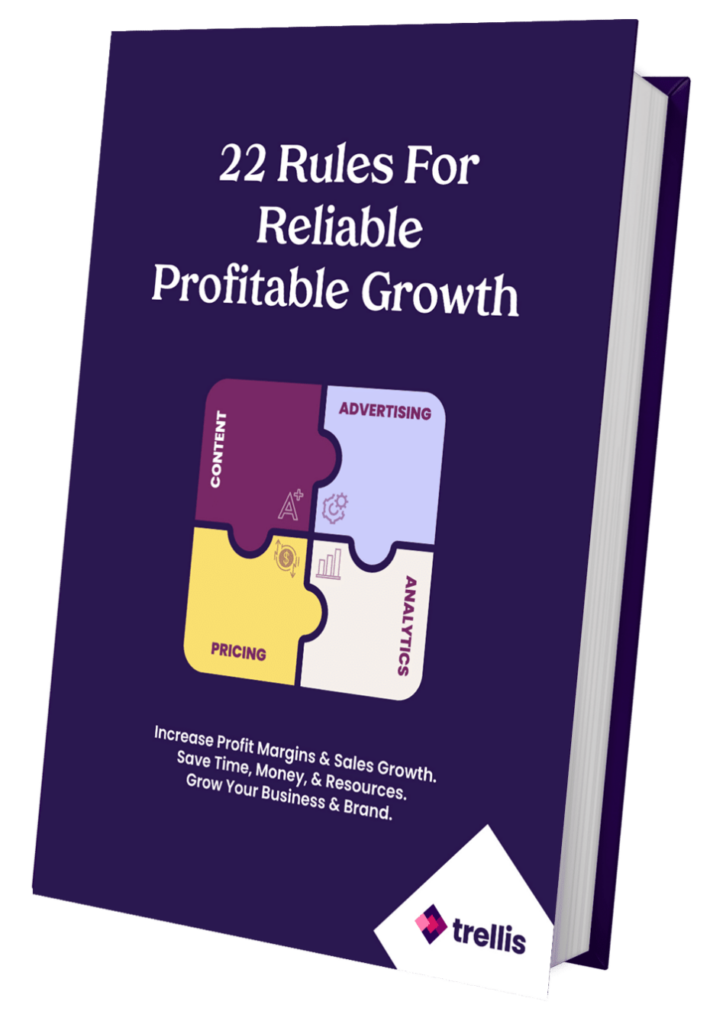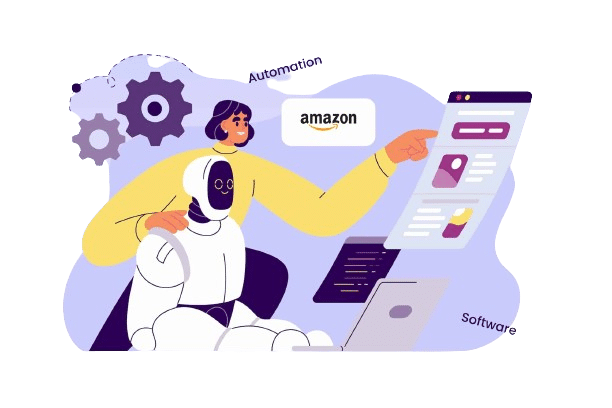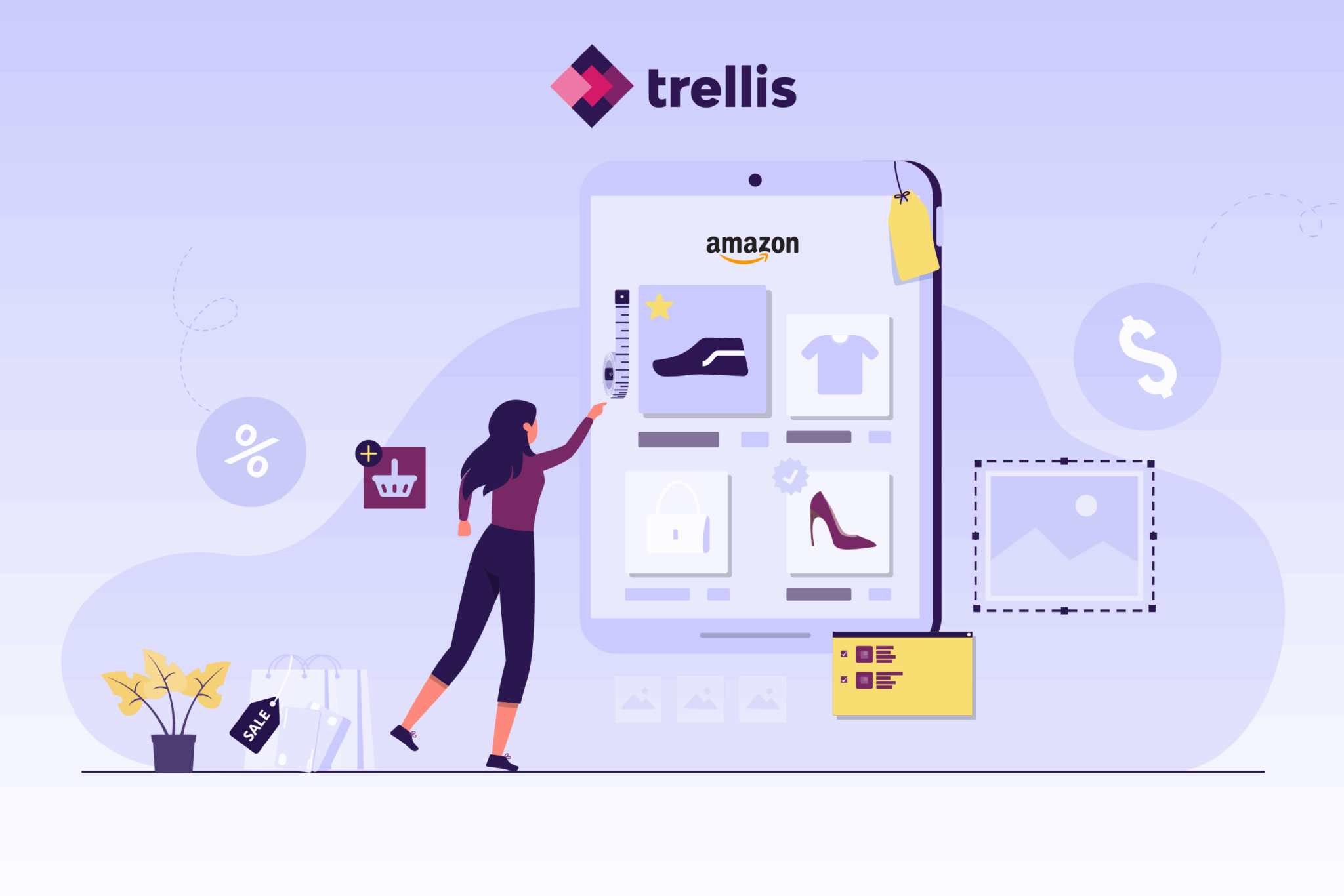As an Amazon seller, one of your main goals is to help your products reach as many potential customers as possible. However, it’s important to ensure that the right customers see your products. Marketing to a target audience can help maximize your profits significantly.
One of the most effective strategies for reaching your target market is utilizing Amazon SEO. Search engine optimization (SEO) is a powerful marketing tool that lets you target users whose search intent aligns with your business. It involves determining keywords, building links, and a variety of other useful methods that we’ll discuss in more detail. By making proper use of Amazon SEO, you can help your products rank higher and increase visibility for your business.
We’ve compiled a checklist to help you build a successful SEO strategy. Once you’ve gone through this list and checked off all the boxes, you’ll be well on your way to boosting the success of your Amazon store.
What is Amazon SEO?
Amazon SEO is an umbrella term for several strategies that help improve brand and product visibility in Amazon search results. This marketing approach is mutually beneficial to sellers and customers alike. By improving your ranking and sales, you make it easier for buyers to find your products. Learning the ropes of Amazon SEO and using it effectively can make a meaningful difference in the success of your online business.
There are 5 key components of Amazon SEO. These include:
- Search box
- Search filters
- Search results page
- Sales rank
- Sponsored Products and advertising
These components play a vital role in improving brand visibility. Customers interact with most or all of these features, either directly or indirectly, to find the products they want more easily. Keep these features in mind as you develop your SEO strategy.

22 Rules to Increase Amazon Sales Up to 450%
Find out the proven framework we used to increase Amazon sales by 450%.
How Does Amazon SEO Work?
Amazon SEO allows you to optimize your product listings in favor of their A9 algorithm. There are numerous strategies you can adopt to achieve this, such as pricing competitively, incorporating the right keywords into your product titles, and uploading high-quality photos.
The goal of the A9 algorithm is to display the most relevant search results to customers. It does this by analyzing user behavior and using this information to decide where to rank your product. For example, say a buyer searched for “running shoes” and clicked on your product listing. If they successfully completed the purchase, this would send a positive signal to the algorithm, which would then boost your product’s ranking in search results whenever other users searched for running shoes.
Amazon SEO Checklist for Sellers
To help you get the most out of Amazon SEO, we’ve put together a checklist for you to use as a guide. Optimizing these aspects of your Amazon product detail page can help boost your sales ranking and brand visibility.
Product Title
The title of your product might seem straightforward and not worth spending too much time on. In reality, this is one of the most important aspects of your Amazon SEO strategy. Instead of simply stating the name of the product, ensure that you incorporate both short-tail and long-tail keywords into the title. This will position your product so that it reaches the right audience.
To use the running shoe example again, you could incorporate phrases such as “lightweight” or “for arch support” to signal to the algorithm that your product has these specific features. You want to be smart about your keyword selection in your title. Make sure it’s easy to understand, and not stuffed with keywords.
Product Description
If the product title is what catches the buyer’s attention, the product description is what convinces them to make a purchase. This section is prime real estate for describing all the key features and benefits of your product. Be as detailed as possible when optimizing product page content, and consider what information would be most useful and valuable to your customers.
Product Features
All of your product’s most relevant features should be included in the main product description. However, it’s also important to note any specifications that customers should know about. For example, if you’re selling a coffee maker, buyers will want to know the size of the machine, the color, and other relevant details. Don’t forget to incorporate any pertinent keywords into the description of your product features.
Product Images
In the context of SEO, product images can speak a thousand words. Consider these points when uploading images:
- Use crisp, clear images: When uploading photos for your product listing, ensure that they’re high-quality images. Products with blurry or unclear photos typically don’t rank well on Amazon search results.
- Use alt text: Without alt text, Amazon’s search engine can’t index your image content properly. Alt text also helps visually impaired users understand what your product is about. For best results, aim for 10 to 15 alt tags for each product image.
Product Category
Product categories help Amazon sort its products so that they appear in the right search results. If you place your products in the wrong category, you’ll be reaching an audience who isn’t interested in the items you’re selling. As a rule of thumb, it’s best to choose the most narrowly defined product categories. This will help ensure that your products don’t get lost in the shuffle. Additionally, the more narrowly defined your category is, the less competition you’ll face.
Backend Keywords
Backend keywords are keywords that are only visible to Amazon sellers. They allow you to target keywords that you were unable to target on the product page itself. To find the right backend keywords, take the time to do some research on your customers’ search behavior. When searching for similar products, what keywords do they use? What products do they take an interest in? Answering these questions will help narrow down your keyword search.
Pricing
A product’s price is one of the biggest factors that buyers consider before making a purchase. It’s crucial to price your products strategically to rank higher in Amazon search results. In a highly competitive marketplace like Amazon, the best way to make your products stand out is to set competitive prices. The Amazon algorithm rewards high-quality products that are set at a reasonable price. That said, remember to adjust your prices accordingly by following a dynamic pricing model.
Reviews
Most buyers are hesitant to purchase a product that has no reviews or has racked up a lot of negative reviews. To help improve your product ranking, be strategic about getting reviews from satisfied customers. Not only do negative reviews hurt your ranking, but they also affect your overall seller rating.
However, remember that no product is perfect. While a seller never wants one star reviews, neutral or negative reviews are a sign of a healthy listing. How you respond to those reviews also shows the type of customer service you’re willing to offer, and how you handle adversity.
Shipping
Customer satisfaction is integral to Amazon’s business practices. When your customers are happy with the service you provide, your products will rank higher in search results. One of the best things you can do to maintain high customer satisfaction is to offer fast and reliable shipping options. Expedited options like two-day or even next-day delivery will help set you apart from the crowd and maximize your profits. Sellers enrolled in Amazon FBA can already take advantage of these quick shipping options.
Inventory
Inventory and shipping go hand in hand, so don’t overlook this crucial step when creating your SEO strategy. It’s a well-known fact that sellers with strong Amazon order management are rewarded by the A9 algorithm. If you frequently run into inventory issues and your products are out of stock, your ranking can take a huge hit.
A+ Content
Your product page is your first impression on customers, so it’s well worth your time to make it count. One of your best tools for optimizing your product listing is Amazon A+ Content. This feature allows you to enhance your product page by adding rich images, text, banners, and more. The goal is to hold customers’ attention while telling them more about your product. With A+ Content, you can even add videos to product listings for increased engagement and interaction.
Sales History
Amazon regularly checks sales history and conversion rates to evaluate how well your product is performing. To stay ahead of the curve, keep an eye on your sales history. This statistic, which is located just below the star rating of your product, tells you how many units you’ve sold over the past 30 days. Depending on the popularity of the product, it can be as low as “100+ bought in the past month” or as high as “100k+ bought in the past month.”
Conversion Rate
Your conversion rate is the percentage of website visitors who are successfully converted into buyers. Sellers with a higher conversion rate typically rank higher on Amazon search results. Alternatively, if most customers quickly bounce from your page, this will tell the algorithm that they aren’t interested in your product, which will hurt your ranking. Optimizing your page can hold buyers’ interest and help boost your conversion rate.
Returns
If customers are unsatisfied with a product, it’s your job to make the returns process as seamless as possible. Sellers who regularly encounter issues with completing returns will drop down the ranks over time. Amazon takes customer service very seriously, so it’s crucial to do your part by returning and refunding all orders in a timely and professional manner. It’s important to note that if you are an FBA seller, Amazon will handle the returns process for you, making the process easy and straightforward for both your business and customers.
Product Variations
It’s important to give customers a wide array of product variations to choose from. They might like the item you’re selling, but they may prefer it in a different color or scent, for example. Offering a variety of options makes your site visitors more likely to convert. That said, try not to overload your customers with too many variations, as this can overwhelm them and prevent them from making a choice at all.
Customer Q&As
The Q&A section of your product page is another great opportunity for SEO strategy. You can incorporate high-performing keywords into your responses to customers’ questions for increased product visibility. In addition, answering queries by providing ample detail about the product can help ensure that buyers are well-informed about the item. This influences their decision to make a purchase.

Increase RoAS on Amazon By 100%
See how our formula improves your advertising KPIs in 8-12 weeks in almost every category.
Amazon SEO Mistakes to Avoid
Now that you have plenty of tools in your Amazon SEO toolkit, you’re ready to create more optimized content. However, before you do, it’s equally crucial to review common mistakes related to this process. Here are some pitfalls that you should try to steer clear of as you build your strategy.
Keyword Stuffing
While keywords are a powerful part of your SEO strategy, beware of keyword stuffing. The Amazon A9 algorithm is trained to detect keyword stuffing and will penalize sellers who are guilty of this practice. Utilize keywords strategically, but don’t overuse them. Remember that you have backend keywords where you can load up keywords for your listing.
Inadequate Keyword Research
While we’re on the topic of keywords, be sure to utilize Amazon keyword research tools ahead of time. It’s much more effective to use keywords sparingly but to choose ones that count. Take the time to understand your target market and customer behavior to select optimal keywords.
Inconsistent Messaging
Your brand’s messaging helps communicate to customers—and to Amazon’s algorithm—what your business is all about. To avoid any confusion, remember to define your messaging and stick to it clearly. This will help boost brand recognition and loyalty.
Non-compliant Listings
Sellers who do not comply with Amazon’s Terms of Service could have their product listings taken down. It’s crucial to familiarize yourself with these terms ahead of time to avoid getting into trouble.

Increase RoAS on Amazon By 100%
See how our formula improves your advertising KPIs in 8-12 weeks in almost every category.
The Value of Amazon SEO
When used properly, Amazon SEO can do wonders for your business’s growth. Keep this checklist handy to help prepare your business for long-term success. At Trellis, we offer a wide range of tools to bolster your SEO strategy, whether you are a growing business or a giant in your niche. Our platform is designed to help you better understand keyword search volume and surpass your competitors.






